Lenworth “Joonbug” McIntosh is a visual artist based in Los Angeles, California. His Jamaican Intuitive roots run deep, shaping his work and reflecting across his creative wheelhouse, which includes illustration, painting, and film-photography. An avid collector of images, McIntosh considers preservation an essential part of his practice. His paintings reference memories of the Jamaican landscape and life in its rural community. Across mediums, his work is narrativedriven, seeking to mirror the collective unconscious of the Black psyche.
| Lenworth McIntosh’s I Came Home and There He Was (2024) draws inspiration from“depictions of Jesus drawn [and painted directly] onto the walls of my Home by the same man who inspired me to become an artist, my granduncle.” Unlike the illustrations provided within colonial religious spaces, McIntosh’s granduncle portrayed the son of God with brown skin and a crown of thorns nestled into natural hair. “There was something deeply resonating in these depictions,” explains McIntosh. “They looked and felt like me. Opposite of the feeling I had in the Baptist Church.” | 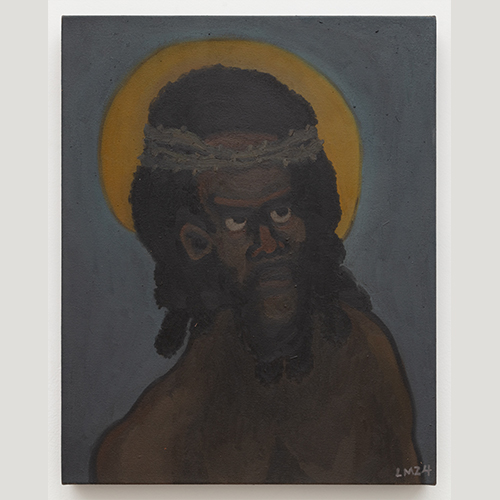 |
| That Small Room (2024) is a small painting of a domestic interior space that evokes a tangle of feelings for the artist. A book rests on a neatly made bed beneath a blue wall upon which McIntosh’s granduncle had lovingly rendered a portrait of Jesus. McIntosh elaborates that while making this work, he encountered “thoughts of how confused yet intrigued I felt in that small room. The Bible feels heavy on the bed, and, at the time, I didn’t know why—the book was not to be questioned. But I was enamored with how the wall drawing of Jesus felt so intuitive and more aligned with my spirit; I could see my community in this version.” | 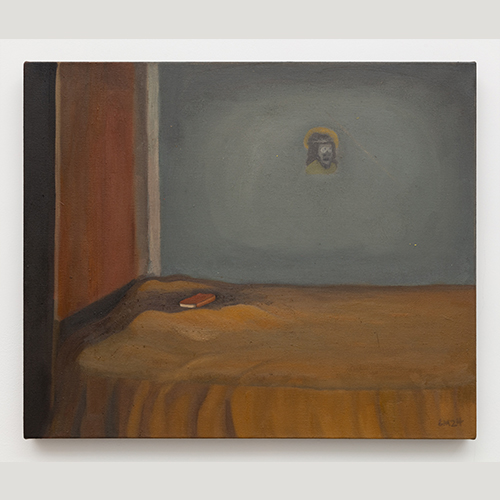 |
| Lenworth McIntosh’s Coming Back Late (2024) depicts a house at night, its porch softly illuminated by the warm, yellow-orange glow of tungsten lights. Reflecting on the house he lived in growing up in Jamaica, McIntosh has a strong visual memory of returning home a party down at the community store or from spending time with neighbors. The house “welcomed the community.” Coming Back Late feels like six-year-old me coming back from a party down at the shop or returning from the neighbor's yard.” | 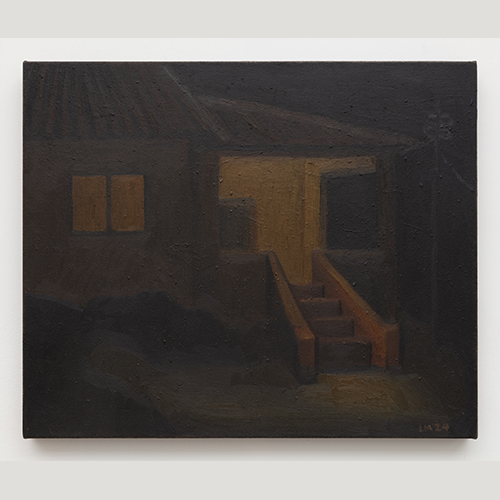 |
| “Remembering those church services that lasted all day it seemed, and the lingering postservice social where the adults talked amongst themselves. I want to get out of these tight clothes, this itchy suit. I can already smell the Sunday Dinner at Home. The elongated pews and structural architecture represent how contained I felt internally.” |  |
| “Power Outages in the Countryside was a thing and when they happened, we lit the kerosene lamp. Usually surrounded by family the flame lit the dark room with a soft flicker which I’m sure contributed to my comfort with low light and color by proxy.” | 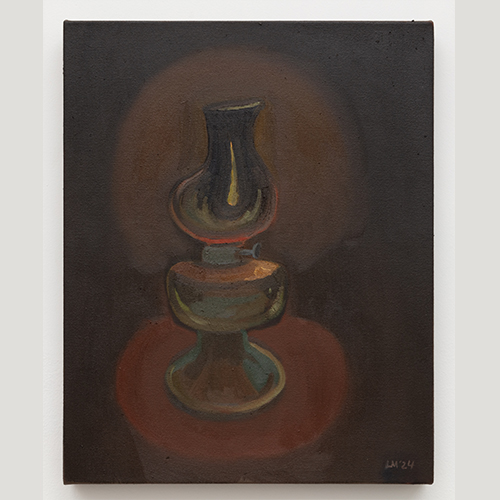 |
| “The Deacon differs from a Pastor by having one foot in the church and the other in the community bridging the gap between the two. They felt like the person who kept a watchful eye on you in Church and outside in the Community. To me, his gaze represented control, so my rebellious feelings likely felt more like a concept to him than anything personal.” | 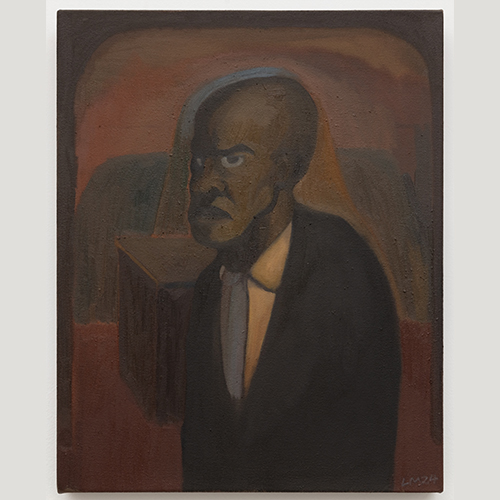 |
| “My uncle Deron has been the keeper of peace, the provider of the people, and loved by the community. He works the land and is religious in his own rite. I pictured him as this monumental figure descending the mountain, metaphorically as Moses back to the people. Cocoyam or Taro is a type of root staple showing up in soups and other comfort dishes. The various shapes of the leaves dancing in the breeze and clustered together in support much like community.” | 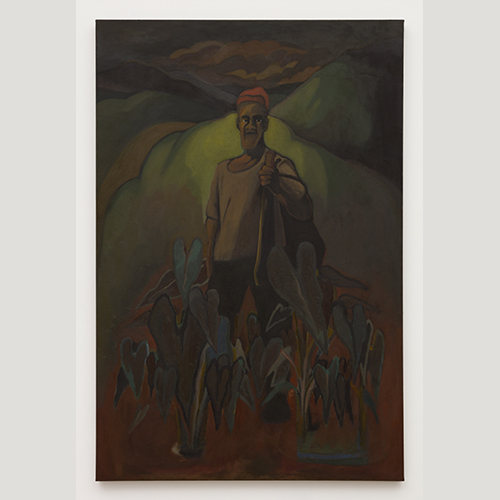 |
| “On my veranda I would spend many moments in deep thought. The thought of a larger world from the comfort of a smaller space, maybe it was foreshadowing, like I always knew I’d eventually leave the island one day.” | 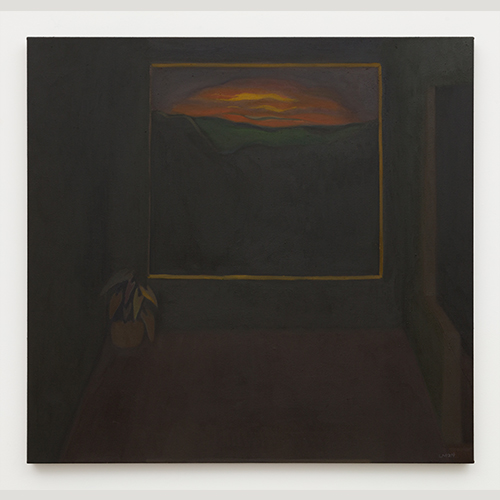 |
| “A nod to the Summer Nights in the countryside. The ones where the community gathers down at the shop where there's usually a game of dominoes, Reggae music playing max volume, libations and food. Yard dogs move unseen collecting food scraps. To me, the Dominoes mirrored the fervor of a church sermon, the players grow from a content focus to an eruption of excitement as if the holy spirit takes over.” | 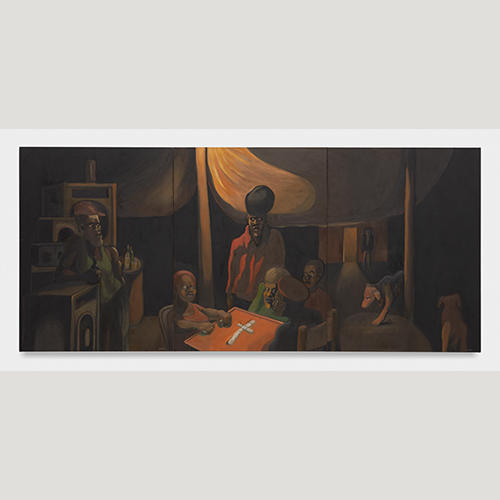 |
| Recalling Sunday morning routines of getting dressed for church, Lenworth McIntosh’s YorkCastle (2024) examines the structural and generational influences that shaped his earliest memories. Emulating his grandparents’ formalities, the young boy in the painting gazes longingly while standing on a stool—a symbol of being raised with intentionality and pride by a church-going family. Stern but supportive, the boy’s parents have certain expectations and see a clear path to his future—with the boy’s visage communicating a sensitivity and awareness. | 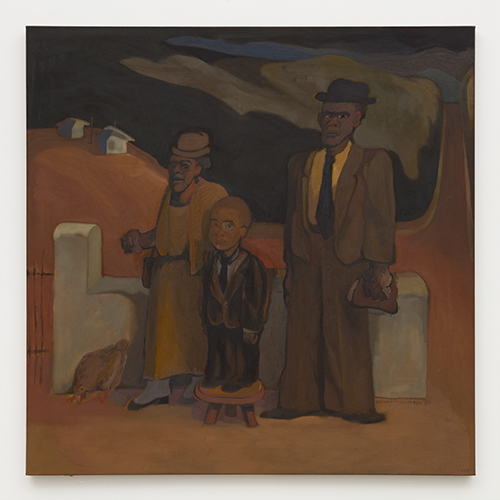 |
| Lenworth McIntosh remembers “feeling free” when he could “wander down to a local shop on a weeknight and hang out under the guidance of elders, within spaces of collective community care. Some of these folks would have also been seen at church,” but the ambiance of local shop was one of ease. In the painting Minny Vale (2024), a young boy visits a shop on a Saturday night without the supervision of his familial elders. Only speaking when spoken to, the boy revels in quiet observation, being influenced by the behaviors and interactions of the adults around him. | 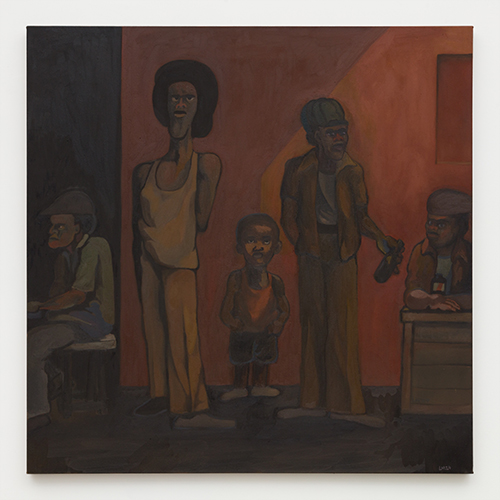 |
